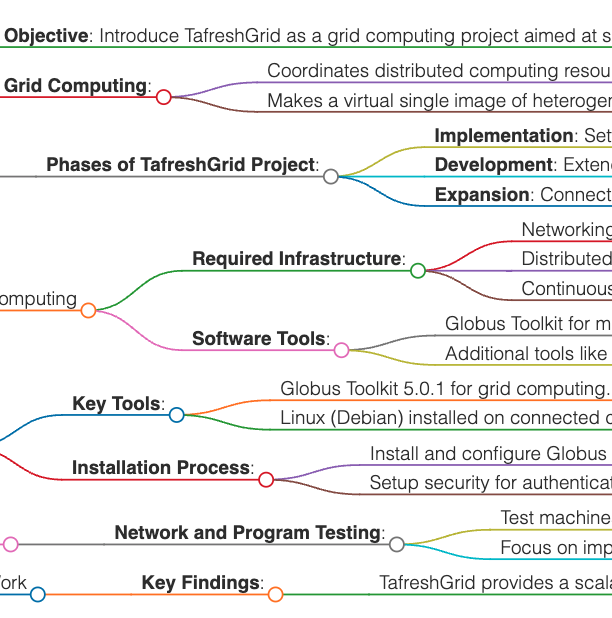TafreshGrid_Grid_computing_in_Tafresh_university
https://www.pirahansiah.com/farshid/portfolio/publications/Papers/TafreshGrid_Grid_computing_in_Tafresh_university
PDF Download My Conference Paper

TafreshGrid: Grid Computing in Tafresh University
1. Introduction
- Objective: Introduce TafreshGrid as a grid computing project aimed at solving computational problems in multiple institutions.
- Grid Computing:
- Coordinates distributed computing resources.
- Makes a virtual single image of heterogeneous resources to solve complex problems.
2. Project Overview
- Phases of TafreshGrid Project:
- Implementation: Setting up the grid infrastructure at Azad University, Tafresh branch.
- Development: Extending the project to all Azad University branches.
- Expansion: Connecting TafreshGrid to the national grid computing infrastructure.
3. Pre-Requisites for Grid Computing
- Required Infrastructure:
- Networking infrastructure (wired/wireless).
- Distributed computational resources.
- Continuous resource-sharing requirements.
- Software Tools:
- Globus Toolkit for managing grid computing tasks.
- Additional tools like J2SDK, APACHE ANT, and Perl for system configuration.
4. Software Installation
- Key Tools:
- Globus Toolkit 5.0.1 for grid computing.
- Linux (Debian) installed on connected computers.
- Installation Process:
- Install and configure Globus on all compute nodes.
- Setup security for authentication and authorization.
5. Testing and Performance
- Network and Program Testing:
- Test machines with grid computing applications to ensure system performance.
- Focus on improving performance compared to non-grid systems.
6. Conclusion and Future Work
- Key Findings:
- TafreshGrid provides a scalable platform for solving national problems requiring heavy computing.
This paper introduces TafreshGrid, a grid computing project developed at Azad University, Tafresh branch. The aim is to coordinate distributed computing resources to create a virtual system capable of solving large-scale computational problems across multiple institutions.
The project is implemented in three phases, starting with the setup of the grid infrastructure at Tafresh University, followed by its expansion to other branches of Azad University , and finally connecting it to a national grid computing network. Key software tools, including the Globus Toolkit, are used to manage the grid computing tasks.
The project demonstrates the successful installation of the grid computing environment, with plans to extend the project for solving national computational challenges that require high-performance computing.